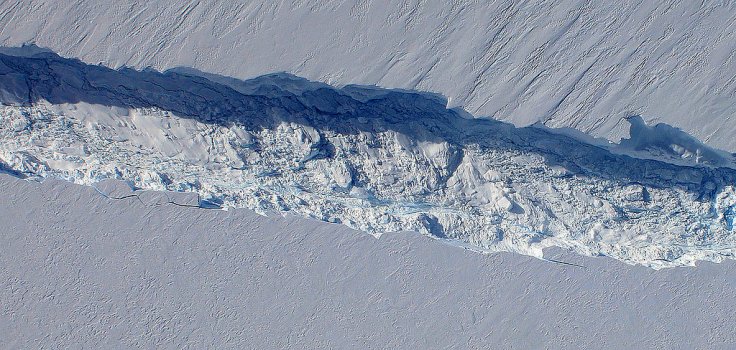While the world is dealing with climate change issues Antarctica has recorded nearly 64.9 degrees Fahrenheit, which is a new temperature record on the continent. Just days after scientists reported the hottest temperature ever recorded in Antarctica, Pine Island Glacier, which is one of the fastest-shrinking glaciers in the continent, has just lost another huge chunk of an iceberg twice the size of Washington, DC.
The scientists at Copernicus, the European Union's Earth observation program have been monitoring the cracks on the glacier which appeared in October 2019. Just two days ago, those cracks finally cut a chunk of the glacier away and released a giant jigsaw puzzle of fresh icebergs into the nearby Amundsen Sea. As per the researchers, the iceberg measured about an area more than 130 square miles, or 350 square kilometres.

Pine Island Glacier
This is one of the largest ice streams in Antarctica which flows together with Thwaites Ice Stream into the Amundsen Sea embayment in West Antarctica. But the change in the glacier is making the scientists more interested in it. Pine Island Glacier is difficult to access and since it is remote from any research bases, so flying there means making multiple short flights, making fuel depots to allow scientists to hop to the location.
However, it should be mentioned that recent calving events are not entirely surprising or particularly threatening to global sea levels. As per NASA's Earth Observatory, calving is a normal part of life for ice formation with sections that float on the water. It also said that since the ice at the edge of the Pine Island Glacier was already floating, it will not directly contribute to sea-level rise after it melts.

Antarctica calving events
Over the past two decades, calving events have been happening much more frequently ta the Pine Island Glacier as well as the Thwaites Glacier, which is also known as the "Doomsday Glacier." As per the scientists since the surrounding ocean warms due to global warming, the caving events have become much more frequent. NASA said that while such natural incidents used to occur at the Pine Island Glacier every four to six years, it became almost an annual event. It should be noted that huge chunks of the glacier calved away in 2011, 2013, 2015, 2017, 2018 and now in 2020.
As a result, both, Pine Island and Thwaites ice shelves are pulling back the island faster than new ice can form. Now, scientists are worried that this persistent retreat could be a sign of a runaway melting cycle is in effect. NASA claimed that the region around the two glaciers contains enough ice which can raise the ocean by four feet if melts away.









